This article was published in Scientific American’s former blog network and reflects the views of the author, not necessarily those of Scientific American
Every single day over 20 terabytes (that’s 20 million megabytes!) of ocean data are collected by the National Oceanic and Atmospheric Administration (NOAA)—not to mention all the other organizations collecting data about the ocean. These bytes help us understand currents, water quality, fish populations and coral reefs. But despite being publically available, barely anyone accesses the government and academic data repositories. So, is it available? Technically yes. But is it easily accessible in a useful way? No, not really. These ocean data are valuable, and the fact that it’s collecting dust is a market failure. From shipping, to fishing, tourism, and recreation, the U.S. “blue economy” produces $352 billion in goods and services, and employs more than 3 million people. How might we unlock this wealth of data and put it to use for business, conservation and recreation?
To answer that question, the XPRIZE Ocean Initiative launched the Big Ocean Button Challenge on Herox—a global mobile app development competition to turn ocean data into needed ocean services. This competition was designed to encourage app developers and data scientists to work toward a future where the world’s ocean data is available at our fingertips, visualized in a user-friendly and meaningful way.
We share the vision of a “new blue economy," a diverse and solution-based ocean economy built on environmental intelligence and data, not just extractive industries. Commercial weather data is worth billions of dollars, and ocean data shouldn’t be far behind, once the data products and markets mature. We aren’t there yet, but the winners of the Big Ocean Button Challenge are leading the way toward an ocean that is healthy, valued and understood.
On supporting science journalism
If you're enjoying this article, consider supporting our award-winning journalism by subscribing. By purchasing a subscription you are helping to ensure the future of impactful stories about the discoveries and ideas shaping our world today.
Out of 80 submissions, these seven winners will be splitting $100,000 in prizes for the best apps in shipping and trade, exploration, public safety, fishing and ocean acidification, with bonus prizes for conservation, education and integrating multiple datasets.
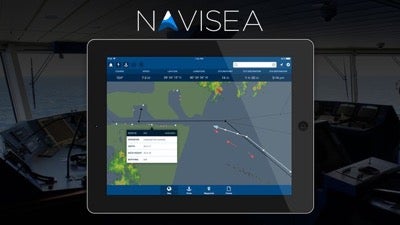
Credit: Navisea
1.Navisea (Winner: Shipping and Trade) Navisea is designed for planning and tracking ocean voyages, and includes data on traffic, ports, docks, navigation and weather. This app can make navigation tools accessible to smaller vessels and marry data from the economic-focused shipping industry with the environmental-focused government and NGO datasets.
“There's no reason that we can't begin to develop practices in the shipping industry that take environmental factors into further account.” — Navisea team
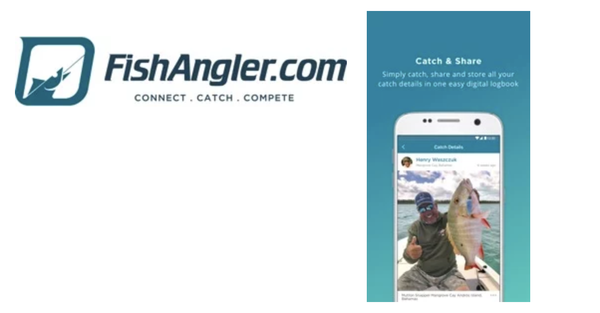
Credit: FishAngler
2. FishAngler (Winner: Fishing) FishAngler enables anglers (a.k.a. recreational fishermen, of which there are over 45 million in the U.S.) to log fishing experiences, discover new spots and access NOAA and USGS weather and water data. This app could be a platform to crowdsource fish catch data, which would help fisheries managers, the scientific community and the fishing community to better understand and protect fish stocks.
“I got bored being retired and I wanted to bring technology to the fishing industry and build something unique that captures one's fishing memories across family generations!” — FishAngler team
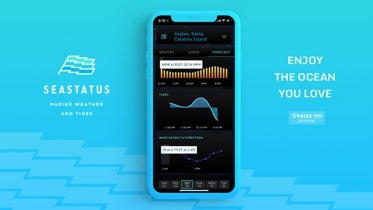
Credit: SeaStatus
3. SeaStatus Marine Weather (Winner: Public Safety, Integrating Multiple Datasets) SeaStatus delivers personalized marine weather data to anyone with an internet-connected mobile device. This app translates super complex datasets into a simple interface, and helps mariners navigate safely.
“With incredible weather, nautical communities, and access to everything the Pacific Ocean has to offer, the impetus for this app was to empower [Southern Californians] to take advantage of what they have.” — SeaStatus team
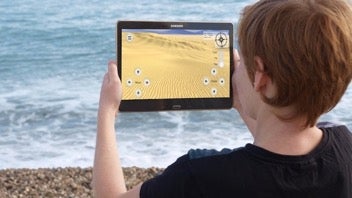
Credit: SeaSee
4. SeaSee (Winner: Exploration, Education) SeaSee App shows us what the world would look like if the oceans were drained of water, using bathymetric (seafloor depth) data to generate 3D views. This app allows you to explore the ocean floor, from shipwrecks to marine habitats.
“If our app helps inspire a few young people to find out more and become scientists, engineers or oceanographers then it will have done its job.” — SeaSee team
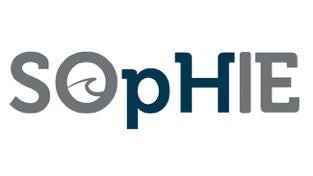
Credit: SOpHIE
5. SOpHIE (the Surface Ocean pH Interactive Explorer) (Winner: Ocean Acidification) SOpHIE was designed to serve those working in aquaculture, fisheries and coastal monitoring, by delivering daily metrics of ocean acidification. This app lets users know if a site that matters to them is at risk from ocean acidification.
“Having SOpHIE to take publicly available data and transform it, to create completely new data and offer some kind of interpretation, will hopefully go a long way in addressing the needs of stakeholders.” —SOpHIE team
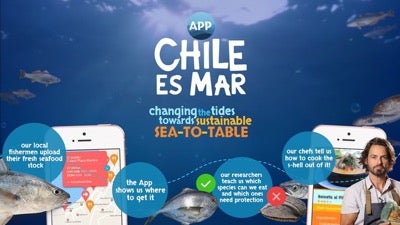
Credit: Chile es Mar
6.Chile es Mar (Winner: Judge's Award) Chile es Mar aims to bridge the information gap between science, fishermen and seafood consumers. The app connects local catch data from artisanal fishers with seafood purchasers, and promotes fair compensation for local, sustainable and traceable seafood. The developers’ hope is to export this model to support small-scale fishing communities in other Latin countries.
“We bridged four different sectors: from artisan fishermen to consumers and from scientists to chefs in one place.” — Chile es Mar team
.jpg?w=418)
Credit: Endangered Waves
7.Endangered Waves (Winner: Conservation) Endangered Waves can empower and incentivize surfers (there are 24 million worldwide) to monitor the health of their coastlines through crowdsourced data. Surfers can use this app to create crowdsourced data to identify and then reduce hazards in their local surf breaks. In the U.S., tourism and recreation comprise 72 percent of employment in the ocean economy and 31 percent of its gross value. Creating apps that cater to this market isn’t indulgent, it’s good business sense.
“We have relied on a number of great partners to get where we are today ... so it really is the story of the surfing and technology communities coming together to create a tool to protect what we love.” —Endangered Waves team
Check out all of the finalist apps, which tackled topics from reporting illegal fishing, to visualizing sea level rise, identifying fish species with a picture and using augmented reality to display real-time ocean data.
In the next five years, mobile apps are projected to be worth $6.3 trillion, global app use will expand to over 6 billion people and the time spent using apps will more than double. Ocean data can ride this wave of mobile app services and help scale how we explore and protect our blue planet.